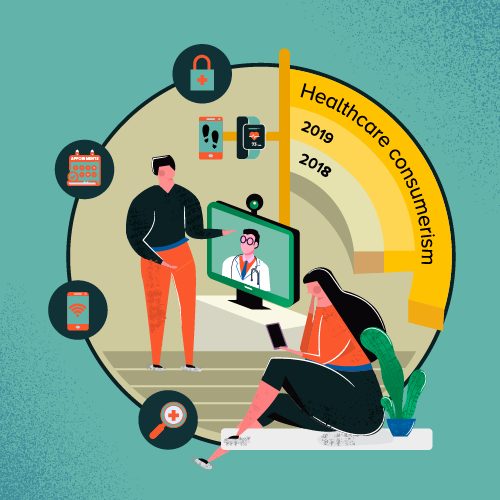How to Turn Healthcare Consumerism Challenge into an Opportunity
Patients have started transforming from being passive healthcare service recipients to becoming active participants in their health matters. This fundamental shift, that we denote as ‘Healthcare consumerization’ is a classic good and bad story – at least in the present scenario.
While, on one hand, it is making patients more independent to make choices around their behaviours, demands, and preferences, on the other hand, it is threatening hospital’s bottom lines.
Let’s today try to reveal the underlying causes of this shift called ‘transforming healthcare consumerism’ and what the traditional healthcare players like hospitals and clinics can do to ride the wave with ease. Let us start with the first part of the consumerism in healthcare challenges and opportunities article.
What is Healthcare Consumerization?
Healthcare consumerization or Healthcare consumerism is a movement where patients take complete control of their healthcare decisions. It is an event which marks the shift from ‘doctor says and patient does’ model to a ‘partnership’ model.
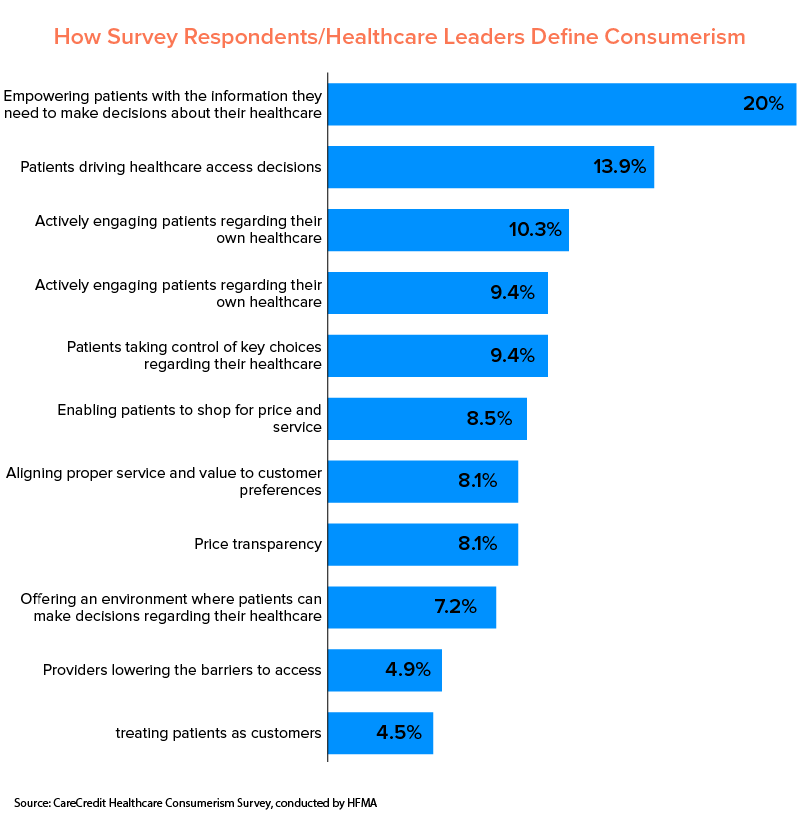
Going by the definition, there are four elements that entail or rather rule this trend of medical consumerism:
- Close cooperation and communication between physicians and patients
- Treatment regulation compliances and patient buy-ins
- Wellness awareness and patient lifestyle
- Prevention focused health activities
What Led to this New Trend of Healthcare Consumerization
The beginning of the healthcare consumerization trend can be traced back to the 2010 enactment of the comprehensive Affordable Care Act law under the presidency of Barack Obama. The act that is known as the biggest player behind the transforming healthcare move.
There are multiple ways how the ACA law has impacted consumers behaviour:
1. They have started planning ahead
The consumers have now started planning ahead of seeking healthcare. It means that they have started making calls to the providers’ office before making appointments to check if they would solve their needs.
2. They have started researching to a new extent
Before the ACA rule, patients used to rely on their brokers for giving them a recommendation on insurance. But now, they are comparing multiple plans on the basis of drug coverage, networks, deductibles, etc.
3. They have become more health conscious
ACA has given birth to a number of new healthcare companies and innovations. The patients, in turn, have become more accepting of using them for tracking their health conditions and severities.
The other element besides the Affordable Care Act that has helped with the rising trend of healthcare consumerization is the growing impact of technology in healthcare. We will look into the health and technology element in detail a little later in the article.
For, we must first understand the impact of consumerism in healthcare trends specially on the front of hospitals and dive in deeper to understand if the present ecosystem is prepared for the shift.
How Are Patients’ Experiences Changing & What Can the Healthcare Industry Do?
The patients who have now turned into consumers are treating the healthcare system as a retail industry. They want to explore their options before choosing their providers. They want care but on their terms – specifically in context of pricing, location, and the mode of care. Ultimately, the new healthcare consumers are not after cost-effective medical treatment, they are after getting value for their invested money – especially since the healthcare cost in the US is growing by manifold.
Here are the key trends that have emerged within the consumer community –
1. Consumers are getting inclined towards self-service options.
The constant innovation in healthcare technologies are driving people to track their health, without doctor’s dependency. With the growing use cases of technology and healthcare, they are not shying away from using wearables for their medical needs and using them to track their calories intake, sleep patterns, and activity details.
2. They are expecting human-ness.
Almost all the health related interactions that patients have with their doctors are more or less one sided. They share their concerns and the healthcare provider tells them a solution. The same is when they get health insurance. Now, with more data coming into the picture and being accessed, the consumers are expected to be talked as humans – meaning, they want to be heard on their challenges, behaviours, and motivators.
In order for providers to meet the needs of their consumers, they will have to take help of tools and digitalization to keep on top of their patients’ intricate demands proactively and ways to keep them invested in an establishment or a system. Moreover, they will have to differentiate assumptions from the actuality of what their passive patients turned healthcare consumers need.
Here are some strategies for incorporating technology in medical field that the healthcare plans and providers can follow to not face the negative financial implications.
Strategies to smoothen the transition towards Healthcare Consumerism
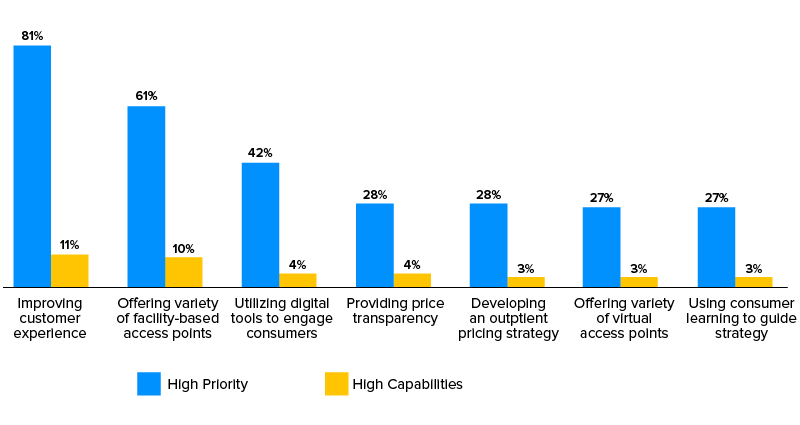
1. Making best use of consumer insights
Consumer-centric industries like entertainment and retail are known to use personalized consumer insights for driving decision making. It’s time that the healthcare industry starts as well. They can achieve this by devising their own analytical capabilities which take in information from surveys and feedback – such is the power of new technology in healthcare.
Most of the health plans and providers continue to be slow in the adaptation plans of patient analytics. In a 2018 survey where more than 200 hospitals participated, it was revealed that only 46% prioritized usage of consumer learning for guiding decision-making while only 15% had the capability for doing that. You will have the power to change this scenario by partnering with a consumerism focused healthcare app development company.
2. Delivery of much greater convenience
It is not a secret how much consumers value convenience. In fact, a tell-tale sign of it is the rise in the retail clinics, concierge, and home care services. The agenda to meet this demand would be open more access points by partnering with walk-in clinics and pharmacies.
Other set of improvements could be on-job health clinic accessibility and greater expansion of home care services. There are many technology specific solutions to meet this demand as well like using a real-time scheduling system that would allow patients to fill in when there are no-shows. Another technology innovation of healthcare application development that can be of great help here is the usage of telehealth services to make care borderless and accessible in real-time.
One of the biggest challenges staring at the US healthcare system is the coming silver tsunami. In 2030, the number of old people are going to outnumber children in the US. But with the correct adoption of healthcare consumerism this can be handled with ease. Through the mode of home care backed by the emerging technology in healthcare like virtual sessions, the sector will be able to bring care delivery to their aging patients’ homes.
3. Making healthcare price transparent
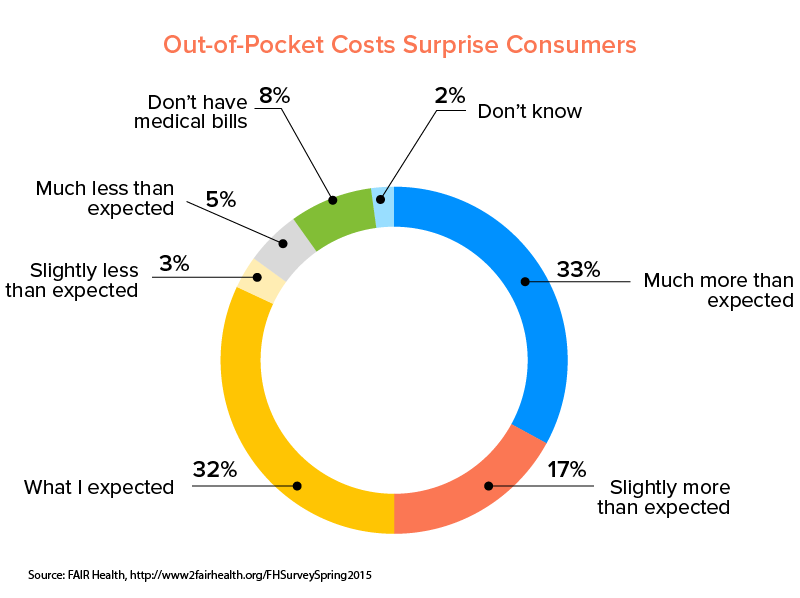
Consumerization holds the potential to align health plans, providers, and patients in a way that they are able to achieve efficient health outcomes. By looking into the patient data and medical records, both healthcare plans creators and providers can deep dive into their consumers’ comfort price range.
For example, seeing their medicine intake data they can gauge that the likely cause of them not continuing with the medicine is the high price. This way, they can offer them a less expensive brand alternative.
Another way to better the patient and provider relationship, could be to set up a financial counseling session ahead of their operation or treatment, to give them a heads-up on the cost they might have to incur.
In instances where the price can be a big deciding factor for the patients, healthcare providers can offer them other value added services to make the price value seem justified – for example, through the mode of healthcare software development, you can give them a product which they can use to monitor themselves.
How is Technology Expediting Healthcare Consumerization?
The prime impact of technology in healthcare has been a rise in popularity of healthcare consumerization. In fact, in its many forms, it has been responsible for making people conscious of whom they can trust with their health and money. This is the reason why consumers are inclined towards the third party technology providers and other tech centric major players in healthcare industry.
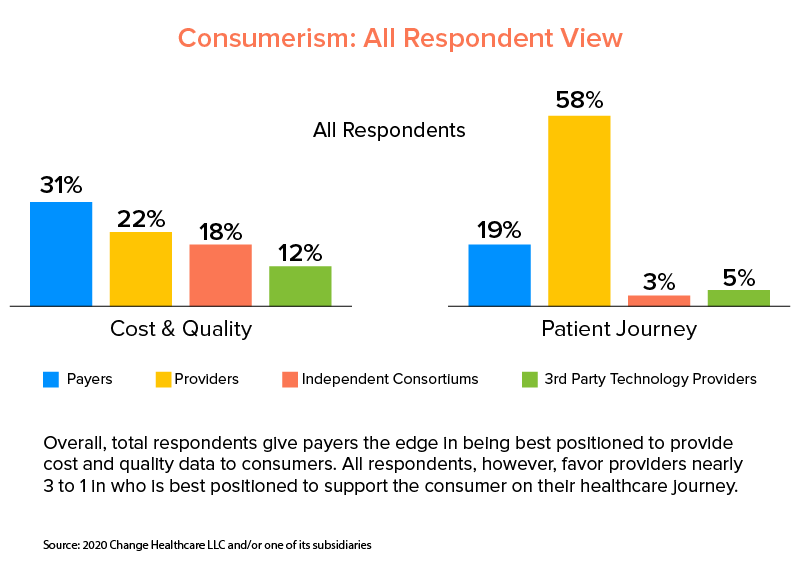
Here’s the explanation behind the statement in the face of the adoption of technology in healthcare. Here’s how technology not just becomes the torch-bearer of the healthcare domain but also acts as the latest trends in healthcare.
Artificial Intelligence is helping people compare plans and healthcare providers on the basis of their own criterias. It is helping providers make sense of the multitude of data they are sitting on and use them for proactive and predictive treatment. Through Blockchain in Healthcare, healthcare app developers are helping with bringing transparency in the interoperability cycle and ensuring that the information transferred over the network is safe and immutable. AR/VR in health and care is doing wonders for the patients suffering from mental illness like PTSD and even treating patients healing with painful operations. IoT & Wearable in healthcare is making patients get comprehensive data about their health from multiple channels.
This is only a snippet of what the technological domain is doing for the healthcare domain. With healthcare consumerism on a rise with technology by its side, the use cases are only poised to grow among the healthcare app development companies. But sitting where we are today, there is yet to be a mass adoption of medical consumerism. It means, it’s a golden opportunity for hospitals to get on top of their consumerization strategy and turn over the profit graph.
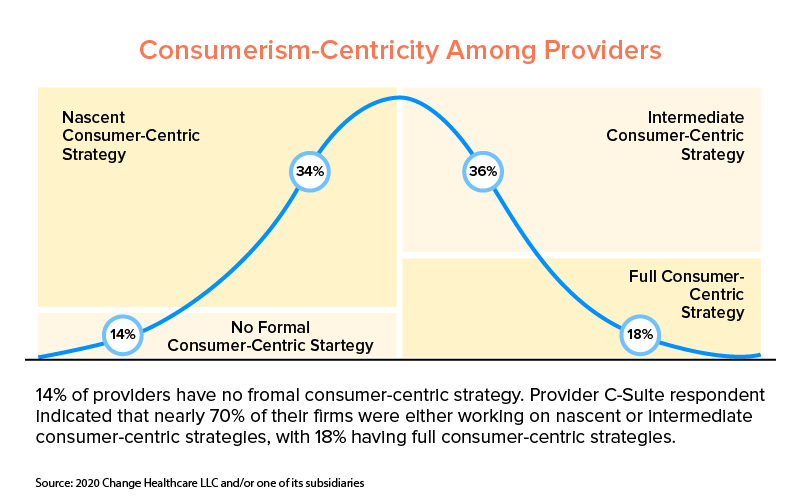
FAQs About Healthcare Consumerism
Q. Why do we need healthcare reformation?
There are a number of events that make it important to reform the healthcare domain from its entirety. But the ones that are the most notable are: the need for a transparent pricing system, more care accessibility options, and a greater free flow of information. All of these problems can be easily solved with the help of a custom healthcare software development company that excels in reforming the sector.
Q. How can we make healthcare better?
The most urgent measure that needs to be taken for making the healthcare domain better is the popularity of healthcare consumerism. Through the approach, it will become possible for the passive patients to play an active role in the health and care system.

strategies your digital product..
